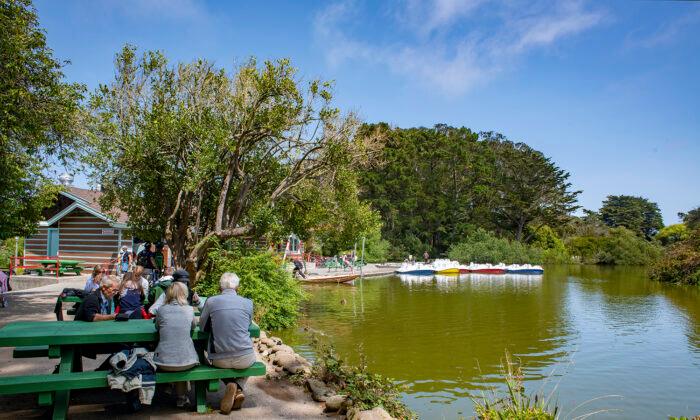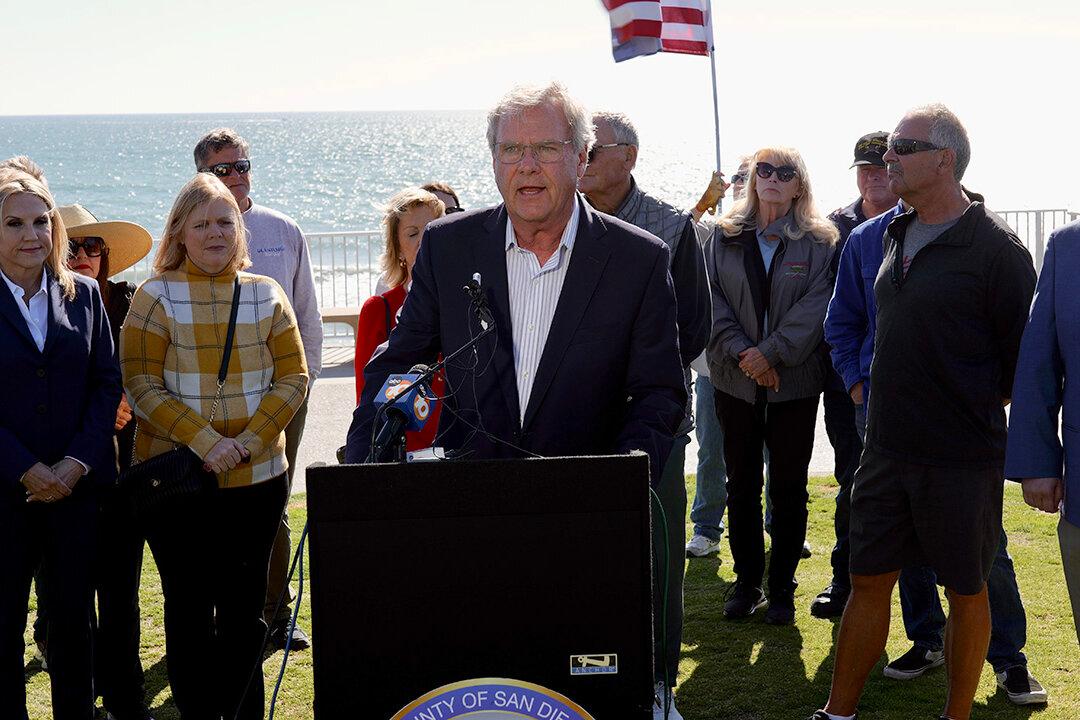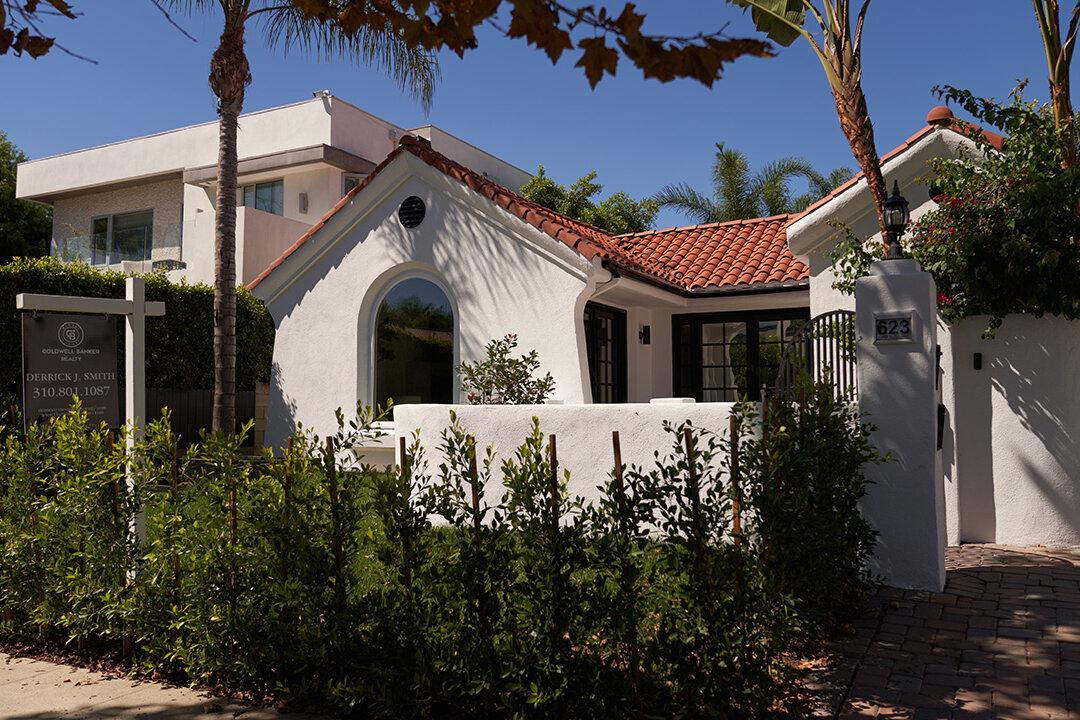“The order states that the Health Officer will continue to assess the quickly-evolving situation regarding coronavirus (COVID-19) and may expand or revise the order, or issue additional orders, covering other venues and events,” the press release stated.
So far, there is no confirmation of when the official festivities will be held.
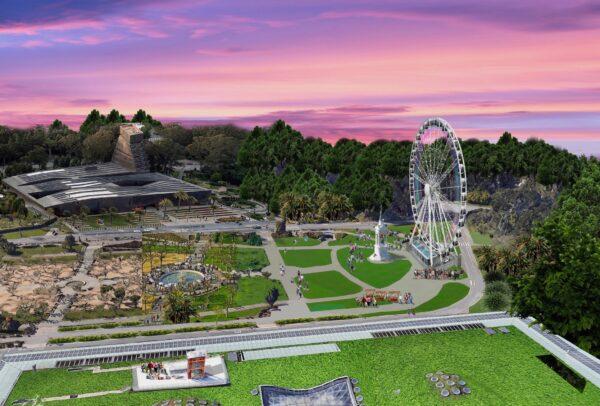
The date of the celebration will also be designated as community day, celebrating the park’s past, present, and future. There will be activities, music, entertainment, and food.
A 150-foot Ferris wheel will be placed in the Music Concourse between the California Academy of Sciences and the de Young Museum. The free ride will take people up to the same level as the observation tower of the de Young Museum and will provide sweeping views of the city and ocean.
Earlier this month, five young bison were added to the Bison Paddock as a birthday gift to the park.
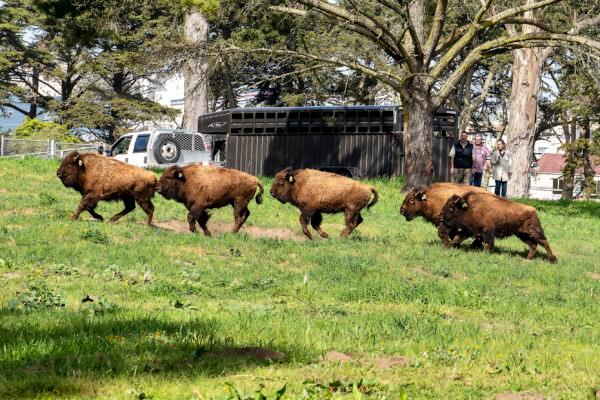
Other events, such as the Patriotic Walk, will be devoted to history. According to Christopher Pollock, a historian with San Francisco Recreation and Parks, there are monuments and sites scattered throughout the park that are centered on the development of the U.S. government.
“For example, there’s the George Washington elm tree that is actually a cutting of an elm that was in the Cambridge Common that George Washington is said to have started war [at] in the Revolutionary times,” Pollock told The Epoch Times.
Other such sites include the George Washington Bicentennial Grove as well as the Heroes Grove, which is also known as the WWI Memorial.
A Tale of Two Windmills
The 1,017-acre park was not always so lush and green. It started out as an arid landscape of sand dunes in 1870.An engineer named William Hammond Hall was determined to bring to life the thriving park he envisioned, based on Central Park in New York City. He and his superintendent, John McLaren, worked together to create the community-oriented park we know today.
To sustain the always-green wonder, the park is constantly irrigated with recycled and treated water.
On the far west side of the park are two decorative Dutch windmills sitting in opposite corners. Both pump fresh water from their wells.
“When you think about it, doesn’t it seem peculiar that fresh water can be pumped out of wells in land that is so close to the Pacific Ocean?” said Pollock. “It just so happens that there’s a very peculiar geological formation going on in the edge of San Francisco that allows there to be such an anomaly.”
Falling for Waterfalls
The creators wanted to give the park an overall English pastoral feel; hence, the green grass and large bodies of water.According to Pollock, McLaren took it a step further and added a waterfall in Stow Lake known as Huntington Falls, which was opened in 1896. Around the center of Golden Gate Park, there is a 400-foot dune that met his ideal conditions for Huntington Falls. A separate, steam-driven facility was installed underneath to pump water to the top.
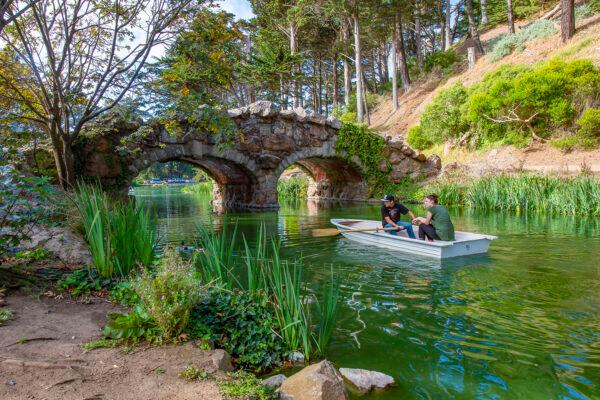
The waterfall itself is 110 feet tall. On the surface, it looks very real, with rocks and boulders surrounding it, but it is all man-made.
A second artificial waterfall called Rainbow Falls is located north of Stow Lake along John F. Kennedy Drive.
“All the rocks and stones are carved from concrete very artfully,” said Pollock. “This became something that was used ultimately throughout the park.”
A Limestone Memorial
Carved decorative pieces of limestone can also be seen around the park. They are actually portions of a building.In the 1930s, wealthy businessman William Randolph Hearst decided to buy a disused limestone Cistercian monastery, the Santa Maria de Óvila monastery in Spain. He wanted to take the pieces and build a residence out of them. The monastery was disassembled block by block to be shipped to where he lived in California.
But during the Great Depression, he was forced to give up the reconstruction money for those tons of limestone. He ended up giving the blocks to Golden Gate Park.
In the 1990s, people decided to rebuild some of that structure near a Cistercian monastery in Northern California, the Abbey of New Clairvaux.
The remaining pieces were used in different parts of the park.
“If you go to the Botanical Garden’s library, their terrace is beautifully built of many of these pieces,” said Pollock. “Maybe a capital of a column, or a fluted this, or a carved molding, all in limestone.”
He said this is stone that was carved anytime from the 1100s to the 1500s.
Other Golden Facts About the Park
- Golden Gate Park was designed by a 25-year-old.
- It is 20 percent bigger than New York’s Central Park (1,017 acres vs. 840 acres).
- The park’s bison are native to America. Bison have resided in the park since 1891.
- Before the San Francisco zoo was built, people could find elephants, zebras, bears, kangaroos, emus, and ostriches around the park.
- The Conservatory of Flowers was the park’s first formal structure. It was opened in 1879.
- After the 1906 earthquake and fire, the park was a sanctuary for 200,000 homeless residents who camped in it.
- The San Francisco Botanical Garden consists of 55 acres with 9,000 different kinds of plants from around the world.
